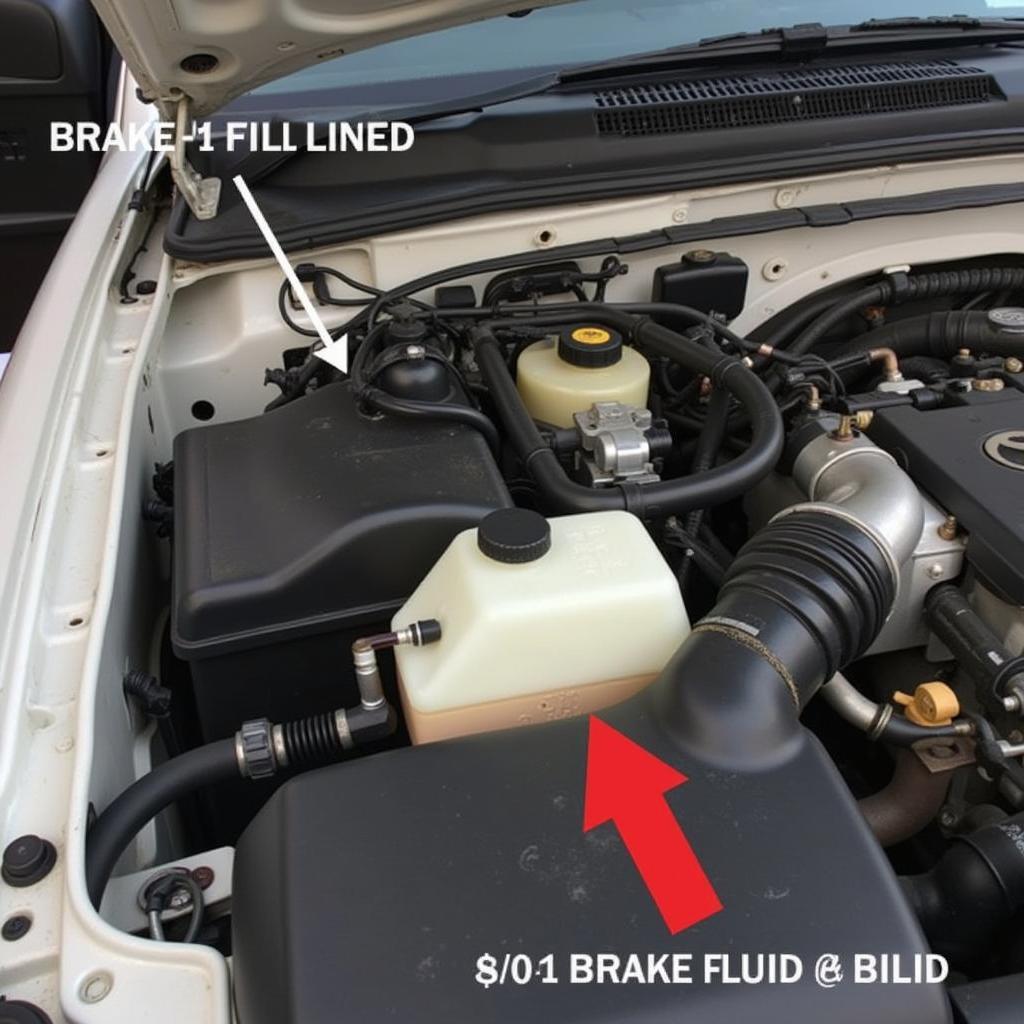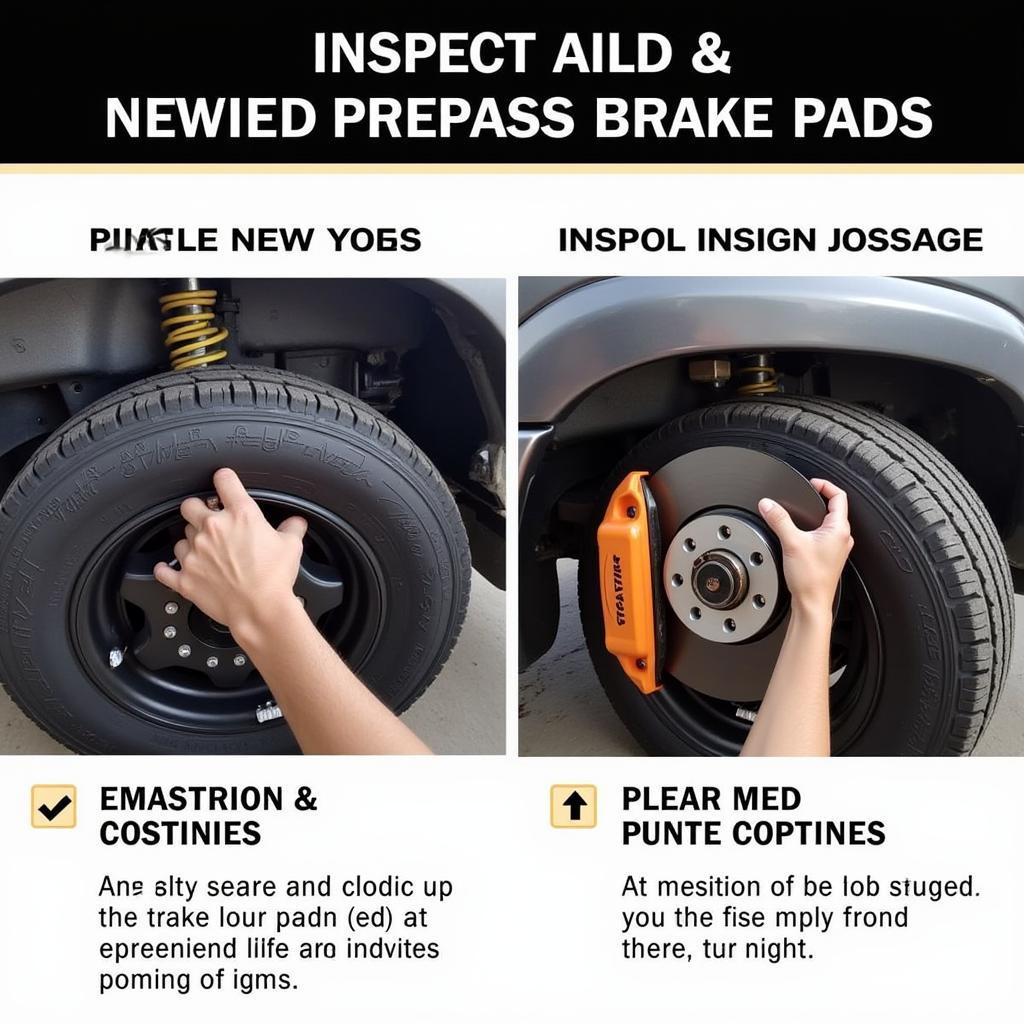If your 2000 Toyota Tacoma 4×4’s brake warning light is stubbornly glowing, you’re in the right place. This comprehensive guide will walk you through the potential causes, diagnostic steps, and solutions for addressing this common issue, empowering you to get back on the road safely and confidently. We’ll cover everything from simple checks to more advanced troubleshooting techniques, utilizing remote diagnostics, programming, and software installation, where applicable.
Understanding Your Tacoma’s Brake Warning Light
The brake warning light serves as a critical safety indicator, alerting you to potential problems within your braking system. It can indicate anything from low brake fluid to more serious issues like a malfunctioning ABS system. Ignoring this warning can compromise your safety and lead to costly repairs down the line. Understanding what triggers the light is the first step to resolving the issue.
Common Causes of a Brake Warning Light on a 2000 Toyota Tacoma 4×4
Several factors can illuminate the brake warning light on your 2000 Toyota Tacoma 4×4. Here are some of the most frequent culprits:
- Low Brake Fluid: This is often the most straightforward cause. A leak in the brake lines, worn brake pads, or a failing master cylinder can all contribute to low brake fluid levels.
- Worn Brake Pads: As your brake pads wear down, the brake fluid level in the reservoir drops. This can trigger the warning light.
- Faulty Brake Light Switch: The brake light switch activates both your brake lights and the brake warning light. A malfunctioning switch can cause the warning light to stay on even when the brakes aren’t engaged.
- ABS Issues: Problems with the Anti-lock Braking System (ABS), such as a faulty sensor or control module, can also trigger the brake warning light.
- Parking Brake Engaged: Sometimes, the simplest explanation is the correct one. Ensure your parking brake is fully disengaged.
 Checking Brake Fluid Level in a 2000 Toyota Tacoma
Checking Brake Fluid Level in a 2000 Toyota Tacoma
Diagnosing the Problem: A Step-by-Step Guide
Here’s a practical guide to help you diagnose the cause of your brake warning light:
- Check the Parking Brake: Make sure the parking brake is completely released.
- Inspect Brake Fluid Level: Open the hood and locate the brake fluid reservoir. Check the fluid level. If it’s low, add brake fluid to the recommended level.
- Inspect Brake Pads: Visually inspect your brake pads through the wheel spokes. If they appear excessively thin, they likely need replacing.
- Check Brake Light Switch: Locate the brake light switch above the brake pedal. Test its functionality by pressing and releasing the brake pedal while observing the brake lights.
- Seek Professional Help: If the issue persists, it’s time to consult a qualified mechanic. They can use diagnostic tools to pinpoint the problem and perform necessary repairs.
Remote Diagnostics and Software Solutions
In some cases, remote diagnostics can be used to identify specific issues within the ABS system or other electronic components related to braking. Specialized software and programming tools can be utilized for re-calibration or updates, addressing software-related glitches that might be contributing to the brake warning light.
 Inspecting Brake Pads on a 2000 Toyota Tacoma 4×4
Inspecting Brake Pads on a 2000 Toyota Tacoma 4×4
“Remote diagnostics can be a game-changer in quickly identifying complex brake system issues,” says John Miller, Senior Automotive Diagnostic Technician at Advanced Auto Solutions. “Software updates and re-calibration can often resolve problems without extensive physical repairs.”
Preventing Future Brake Warning Light Issues
Regular maintenance is key to preventing future brake problems. Adhere to your Tacoma’s recommended maintenance schedule for brake fluid flushes, brake pad replacements, and inspections. This proactive approach can save you time, money, and headaches down the road.
Why is my brake warning light on?
The brake warning light on your 2000 Toyota Tacoma 4×4 is a signal that something isn’t right with your braking system. It could be as simple as low brake fluid or a more complex issue like a faulty ABS sensor.
“Regular brake inspections are crucial for maintaining optimal safety,” adds Sarah Chen, Certified Automotive Technician. “Catching potential issues early can prevent more serious problems and keep your braking system performing at its best.”
Conclusion
Addressing a brake warning light on your 2000 Toyota Tacoma 4×4 is crucial for ensuring your safety and preventing further damage to your vehicle. By following the diagnostic steps outlined in this guide and considering remote diagnostics and software solutions where applicable, you can effectively troubleshoot the problem and get back on the road with confidence. Remember, if you’re unsure about any step, consulting a qualified mechanic is always the best course of action. Don’t ignore that brake warning light – address it promptly and ensure the safety and reliability of your 2000 Toyota Tacoma 4×4.

